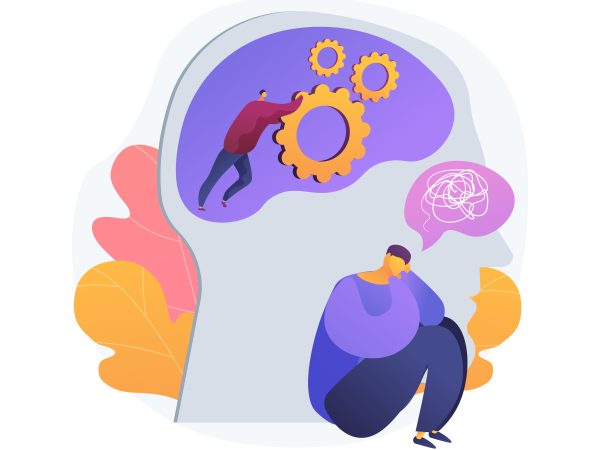Therapy notes serve as the backbone of professional counseling, psychotherapy, and mental health treatment. Clear and structured documentation not only helps therapists track client progress but also ensures compliance with ethical and legal standards. Effective therapy notes provide insights into treatment plans, interventions, and overall client well-being. In this article, we will explore the importance of therapy notes, best practices for documentation, and how clear record-keeping enhances client progress.
The Importance of Therapy Notes
Therapy notes are essential for multiple reasons:
- Continuity of Care: They help therapists track client progress over time and make informed treatment decisions.
- Legal and Ethical Compliance: Proper documentation ensures adherence to professional guidelines and protects therapists in case of legal issues.
- Insurance and Billing: Many insurance providers require thorough documentation for reimbursement.
- Enhanced Client Outcomes: Detailed notes allow therapists to evaluate the effectiveness of interventions and modify treatment strategies accordingly.
Types of Therapy Notes
Therapists use different types of notes to document sessions and treatment plans. The most common types include:
1. Progress Notes
These are formal records summarizing a session’s content, interventions used, client responses, and plans for future sessions. They typically follow the SOAP (Subjective, Objective, Assessment, Plan) format:
- Subjective: Client’s statements and concerns
- Objective: Therapist’s observations
- Assessment: Analysis of the client’s condition
- Plan: Treatment goals and next steps
2. Process Notes
Also known as psychotherapy notes, these are personal reflections of the therapist and are kept separate from medical records. They help in understanding therapist-client dynamics but are not typically shared with clients or third parties.
3. Treatment Plans
A structured plan that outlines client goals, therapeutic approaches, and expected outcomes. These help both therapist and client stay on track toward desired improvements.
4. Case Notes
Detailed records used in multidisciplinary teams to communicate client progress with other healthcare professionals.
Best Practices for Effective Therapy Notes
To ensure that therapy notes are clear, effective, and legally compliant, therapists should follow these best practices:
1. Be Concise Yet Detailed
Avoid unnecessary information while ensuring all critical details are recorded. Focus on key aspects like symptoms, interventions, and responses.
2. Use Professional Language
Avoid subjective or overly personal comments. Instead, use clinical and objective language that is clear to other professionals.
3. Maintain Consistency
Following a structured format such as SOAP or DAP (Data, Assessment, Plan) ensures uniformity across all therapy notes.
4. Ensure Confidentiality
Therapy notes must comply with HIPAA (Health Insurance Portability and Accountability Act) regulations to maintain client privacy. Secure electronic health records (EHR) systems should be used for digital documentation.
5. Document in a Timely Manner
Writing notes immediately after a session helps in accurate recollection of details and ensures completeness.
6. Avoid Personal Bias
Maintain objectivity in notes, focusing on factual client responses rather than personal opinions.
How Clear Documentation Enhances Client Progress
Well-structured therapy notes directly impact client progress in several ways:
1. Tracking Improvements
By maintaining detailed progress notes, therapists can track behavioral patterns, emotional changes, and improvements over time.
2. Setting Clear Goals
A well-documented treatment plan ensures that both the therapist and client have a clear roadmap for achieving therapeutic goals.
3. Enhancing Communication
When collaborating with other healthcare professionals, well-written notes provide essential information that facilitates integrated care.
4. Facilitating Reflection
Clients benefit from reviewing summarized progress, reinforcing their commitment to therapy.
Digital Solutions for Therapy Notes
Modern therapists increasingly use digital tools to enhance documentation efficiency. Electronic Health Record (EHR) systems and therapy note apps offer:
- Secure cloud storage
- AI-assisted note-taking
- Easy retrieval and organization
- Compliance with legal standards
Conclusion
The art of therapy notes lies in balancing clarity, conciseness, and thoroughness. By following best practices, therapists can ensure that their documentation enhances client progress while meeting legal and ethical requirements. Whether using traditional paper notes or digital tools, maintaining accurate records is key to delivering effective mental health care.
FAQs
1. What should be included in a therapy progress note?
A therapy progress note should include the client’s presenting issues, session details, interventions used, the client’s response, assessment, and a plan for future sessions.
2. Are therapy notes confidential?
Yes, therapy notes are confidential and must comply with legal and ethical guidelines such as HIPAA to protect client privacy.
3. Can clients request to see their therapy notes?
Clients have the right to request access to their progress notes, but psychotherapy (process) notes are typically excluded from disclosure.
4. How long should therapy notes be kept?
Retention periods vary by jurisdiction, but generally, therapy notes should be kept for at least 5-7 years after the last session.
5. What is the best format for writing therapy notes?
Common formats include SOAP (Subjective, Objective, Assessment, Plan) and DAP (Data, Assessment, Plan), ensuring structured and professional documentation.
Explore insightful articles on NoteNest Blog, where our expert authors share valuable knowledge on productivity, organization, and note-taking strategies to boost efficiency.

